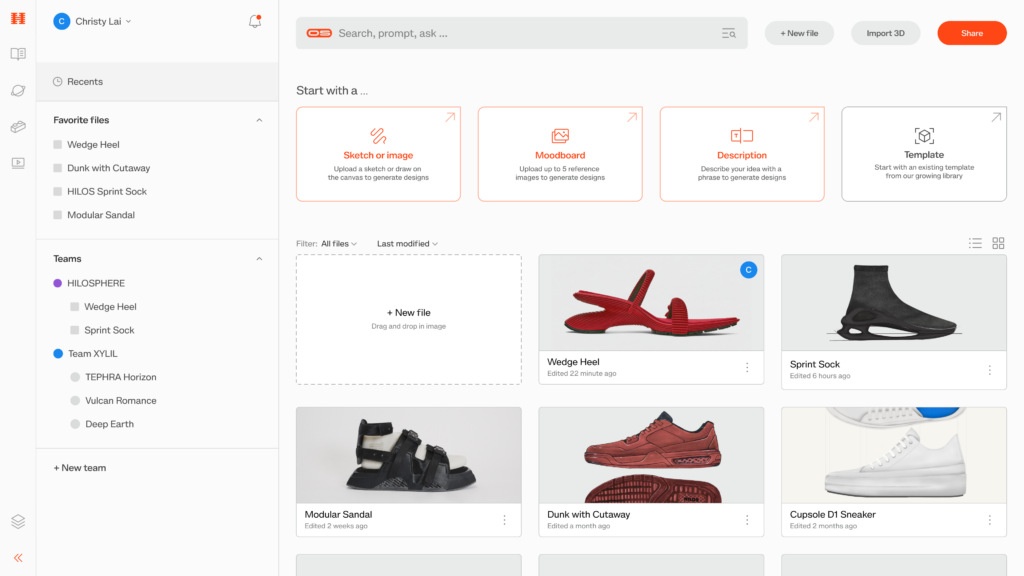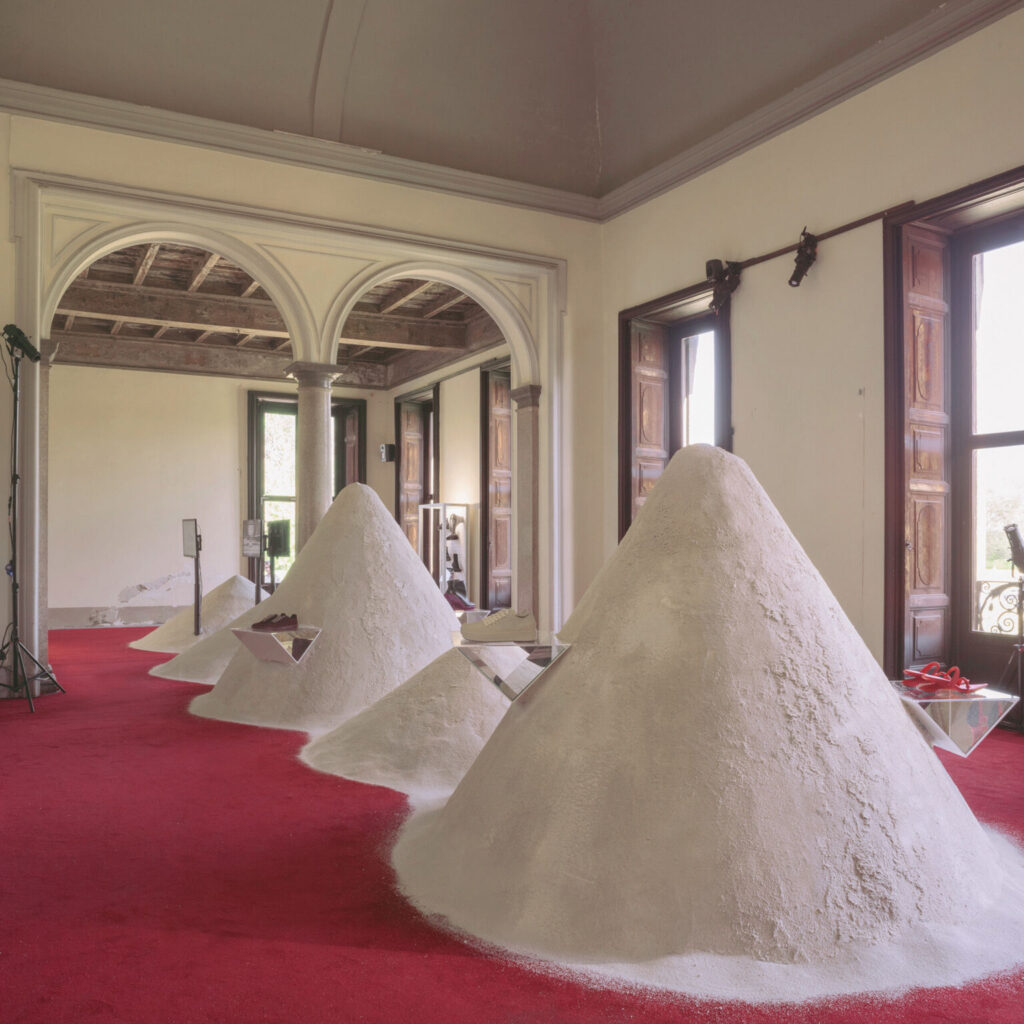At Milan Design Week, footwear 3D printing startup HILOS has unveiled its latest development, Studio OS. Introduced at the historical Villa Bagatti Valsecchi, the platform is meant to redefine how footwear is designed and manufactured.
Studio OS, which the company frames as “the first” generative design software specialized for 3D printed footwear, leverages artificial intelligence to transform initial concepts into tangible, wearable products. The software’s debut at Milan follows the introduction of HILOS Studio at Art Basel Miami last year, which marked a significant shift in the company’s approach from producing to facilitating production.

The new platform is meant to allow designers of all skill levels to rapidly iterate on their ideas through a user-friendly interface that converts text prompts, sketches, or mood boards into detailed 3D CAD models ready for production. With Studio OS, HILOS aims to both speed up the design process as well as enhance the flexibility and control creatives have over the final product. The platform allows for the decomposition of shoe components into distinct layers, providing granularity and the ability to regenerate parts at the component level. The company claims that products can be launched to market in as little as 90 days using Studio OS.

In an immersive presentation, HILOS showcased an array of products created using Studio OS within an elaborate setup at Alcova. The setting, complete with shoes emerging from sand dunes and a double arch colonnade splitting the display area, encapsulated the fusion of digital prowess and physical artistry.
Adding to the spectacle and educational value of the event, HILOS arranged a series of speakers from the European design and architecture scenes, including Carlo Ratti, MIT professor and Venice Biennale organizer; Arturo Tedeschi, a computational designer; and James Carnes, former VP of Strategy and Innovation at Adidas.

Founded in 2019 and based in Portland, HILOS attempts to reduce the environmental impact of footwear manufacturing. Partnering with companies like BASF, HP, and AMT, HILOS has demonstrated the ability to cut carbon emissions and water usage in shoe production by 50 percent and 99 percent, respectively. These efforts are part of a broader ambition to produce footwear locally and on-demand, minimizing waste and inventory overheads.
After investment from ex-Nike executives, we can really see how HILOS’s business model has evolved to establish a complete design-to-production workflow that can be leveraged by new and established footwear brands alike. This coincides with other companies, like Zellerfeld, pursuing their own models for bringing 3D printed shoes to market.
In turn, we’re witnessing the nascent evolution of the 3D printed footwear market that began with experiments by large manufacturers a decade ago to the beginning of true end-product manufacturing. It’s still early stages for this emerging segment, but it’s exciting to see it finally take shape.
Feature image credit: Ancuta Sarca
Subscribe to Our Email Newsletter
Stay up-to-date on all the latest news from the 3D printing industry and receive information and offers from third party vendors.
Print Services
Upload your 3D Models and get them printed quickly and efficiently.
You May Also Like
Reinventing Reindustrialization: Why NAVWAR Project Manager Spencer Koroly Invented a Made-in-America 3D Printer
It has become virtually impossible to regularly follow additive manufacturing (AM) industry news and not stumble across the term “defense industrial base” (DIB), a concept encompassing all the many diverse...
Inside The Barnes Global Advisors’ Vision for a Stronger AM Ecosystem
As additive manufacturing (AM) continues to revolutionize the industrial landscape, Pittsburgh-based consultancy The Barnes Global Advisors (TBGA) is helping shape what that future looks like. As the largest independent AM...
Ruggedized: How USMC Innovation Officer Matt Pine Navigates 3D Printing in the Military
Disclaimer: Matt Pine’s views are not the views of the Department of Defense nor the U.S. Marine Corps Throughout this decade thus far, the military’s adoption of additive manufacturing (AM)...
U.S. Congress Calls Out 3D Printing in Proposal for Commercial Reserve Manufacturing Network
Last week, the U.S. House of Representatives’ Appropriations Committee moved the FY 2026 defense bill forward to the House floor. Included in the legislation is a $131 million proposal for...

































